Every species of flamingo gets its pink color from its food, and specifically from carotenoids. However, the way they obtain this food can be a bit of an odyssey.
For this article, I am using captive American Flamingos images, and I will discuss why it is important to notate captive soon.
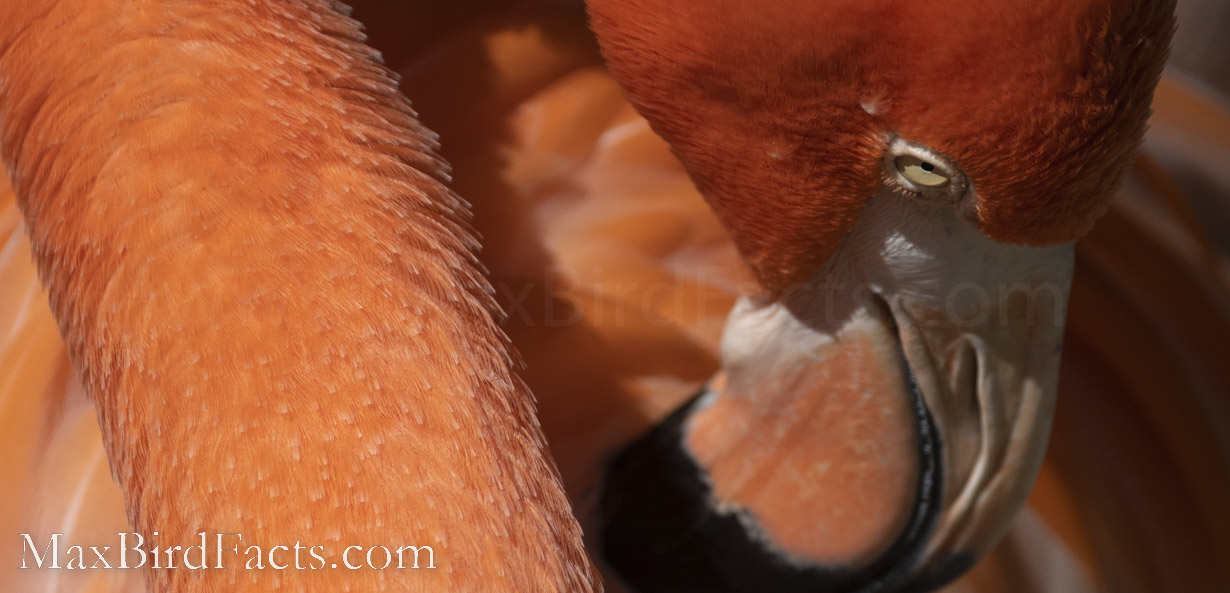
You Are What You Eat
Flamingos filter-feed on small crustaceans, mollusks, and insect larvae in brackish and freshwaters. These prey animals are primary consumers, eating the producers of an ecosystem, the plants.
Like the vast majority of other plants, algae use chloroplasts to conduct photosynthesis. But why is this important to the flamingos?
The algae are rich in beta-carotenoids, a vital pigment for photosynthesis. They are responsible for the absorption of the red-orange color spectrum (580-650 nm).
As the plants absorb this frequency of light, they reflect the blue-green wavelengths. The reflection of the blue-green wavelength is why plants appear green to our eyes.
When crustaceans eat these algae, beta-carotene builds up in their systems. Once a flamingo consumes these tiny creatures, the bird can begin synthesizing the carotenoid from it.
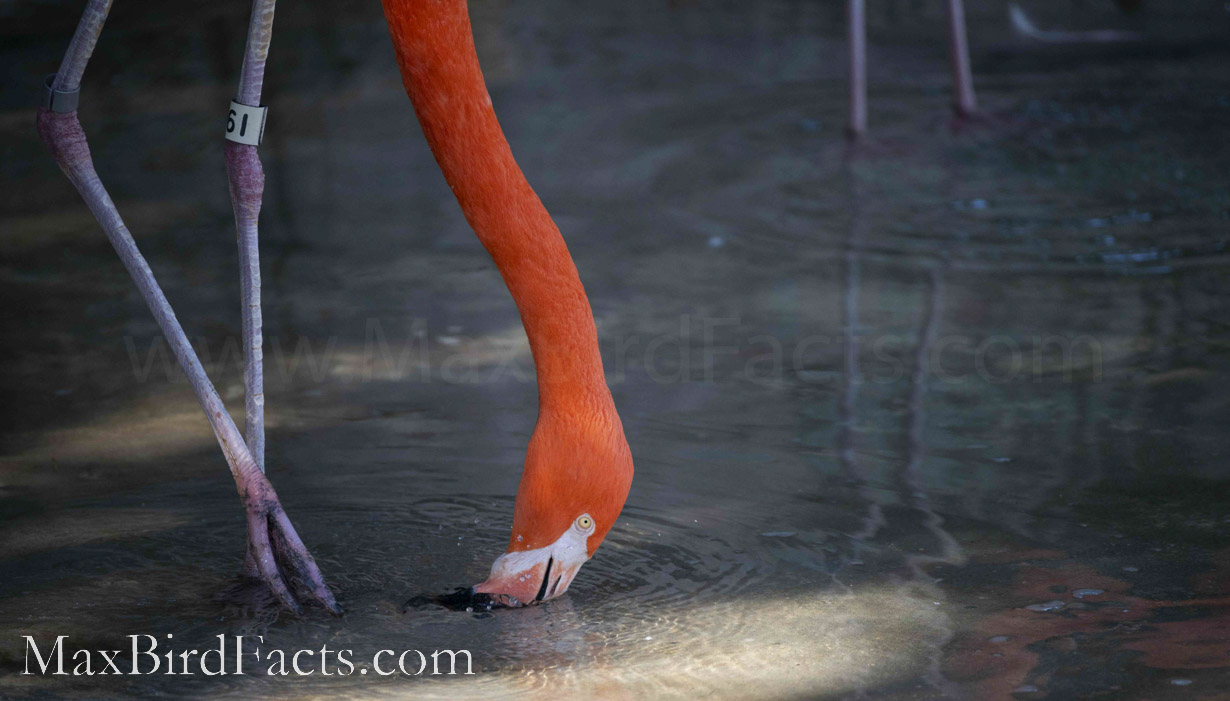
Enzymes and lipids produced by the digestive system in these birds make the red-orange pigment available for use—the fat reserves created by this food store these colors. These reserves are found under the skin and near the face, beak, feathers, and legs.
The fat under the skin feeds the processed carotenoid into the feathers around the body and the skin around the face and legs, giving them their iconic pink color.
How do the flamingos eat such tiny prey, though? Wouldn’t it take them forever to gather enough food to have such a drastic change in their coloration?
These birds found a niche that they could exploit in their environment; natural selection through random mutation helped them become more efficient at filling it.
Modifications to the Beak
The beak’s shape was changed, allowing the flamingo to have more of it in the water while still keeping their eye level with the horizon. Helping them maintain a lookout for predators as they feed and increasing the amount of water they can take up into their mouths.
Further modifications done to the beak create a baleen-like structure to filter the food from the water. Like baleen whales, flamingos take water and prey into their mouths and use their tongues to push the water out while retaining their meal.
The structures on flamingos resemble tiny, needle-like teeth. They are far too weak to bite and tear away flesh, like in mammals and reptiles, but that isn’t their purpose.
Overlapping layers of these structures on the maxillary (upper) jaw allow the birds to have an excellent filter. This filter is massively important because the amount and depth of their color are dependent on how much they eat.
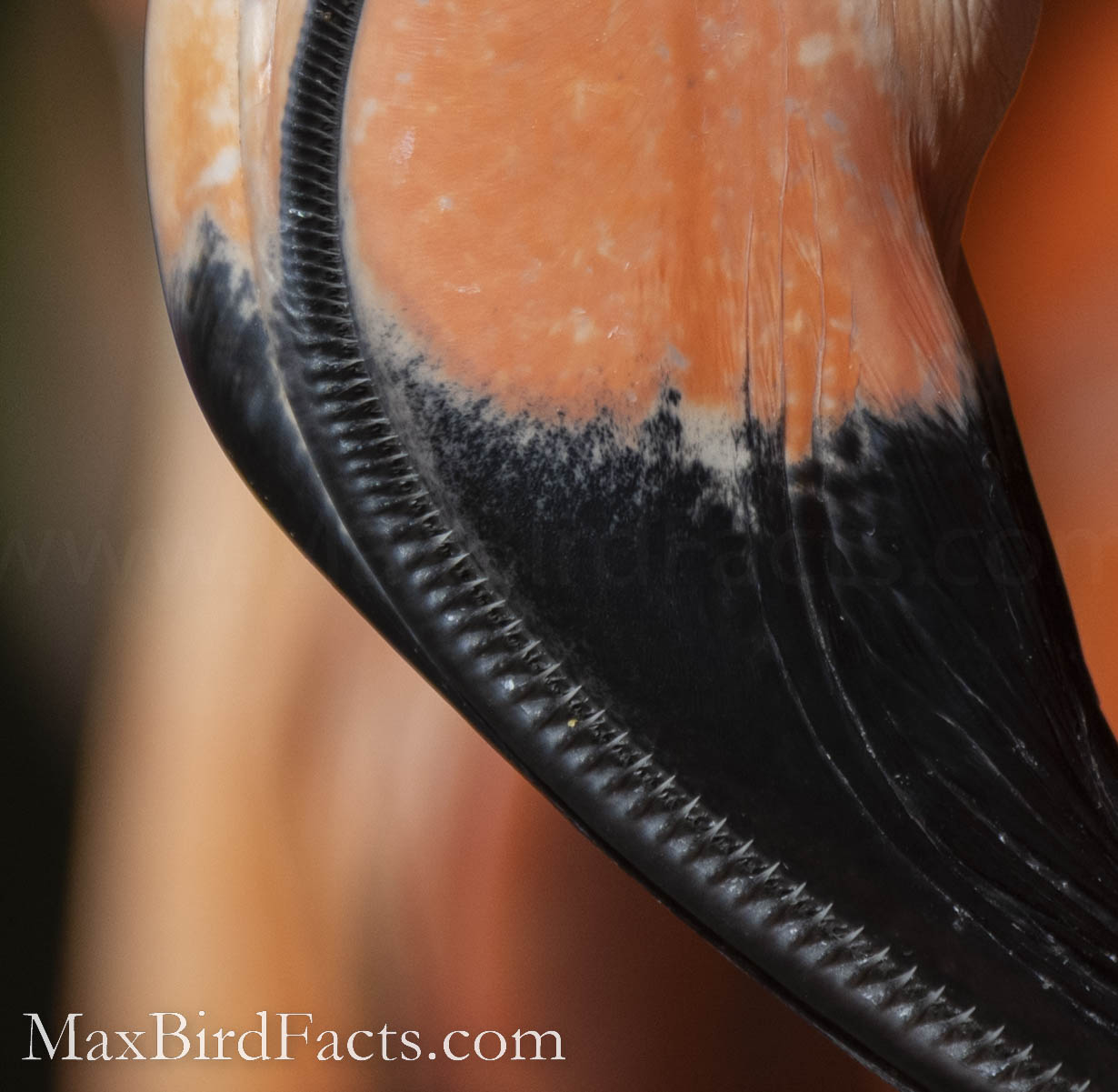
The quantity and quality of their prey are huge determining factors for the coloration. Flamingos who gather plenty of food, or food that is very rich in carotenoids, will have the iconic, brilliant pink coloration.
If an individual isn’t able to devour enough of these little crustaceans, then the aspect of their plumage will suffer. All of this leads us to the next topic of discussion, why such a bright color?
Why Pink?
Bright colors and flashy displays dominate the world of birds. The leading argument for brightly colored feathers in birds is for sexual attraction and signaling.
Pigmentary coloration, like what we have in flamingos, is an honest signal to potential mates. As stated before, if the individual can’t find a good source of nourishment, their plumage will suffer, and so will their chances of mating.
Carotenoids are responsible for yellow, orange, red, and pink colors in every bird. The bird itself cannot produce carotenoids, so it has to accumulate from the food they eat.
This type of coloration absorbs and reflects specific wavelengths of light. The feather molecules in flamingos act similarly to what we talked about earlier with plants.
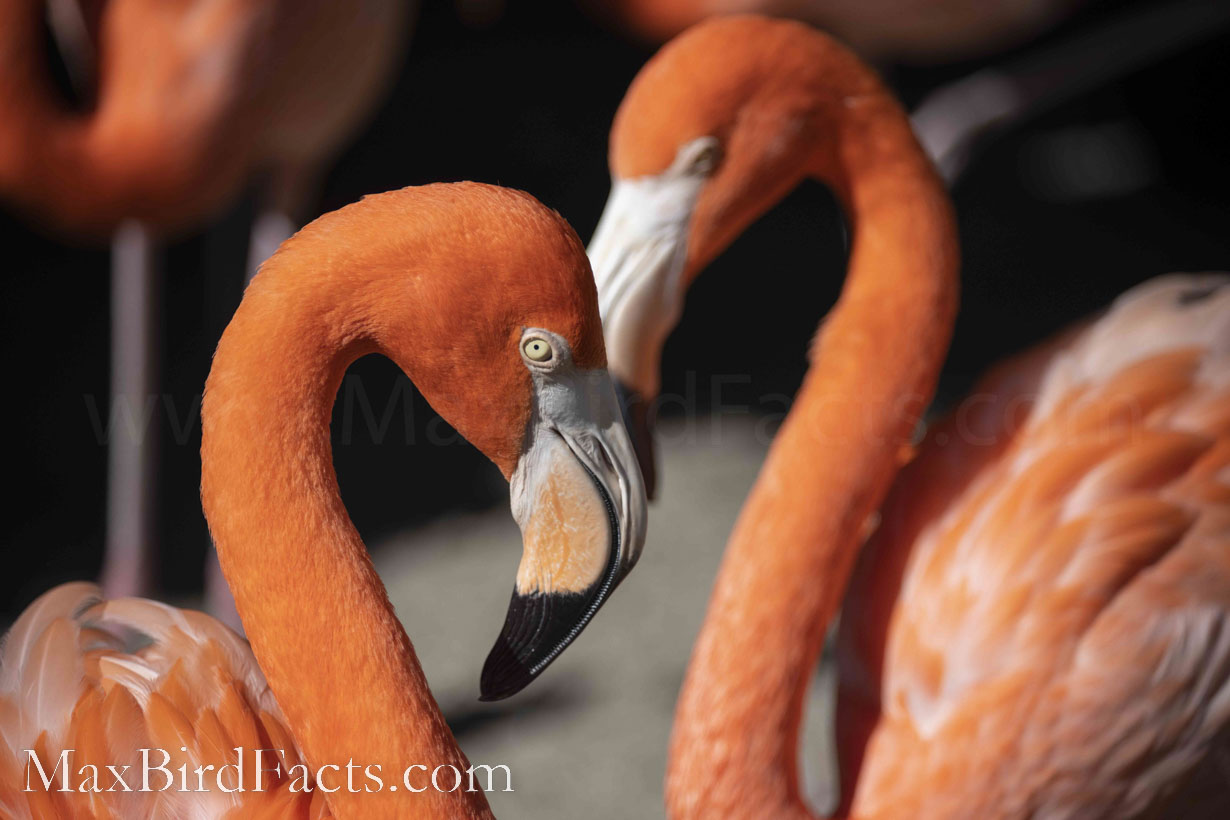
Honest signals are essential when choosing a mate, and this could be why both sexes show the pink color. Both male and female flamingos can be judged on their looks, and if it isn’t good enough, a mate may not choose them.
Neither parent wants their offspring to start at a disadvantage, genetic or physical, so they will often go for a partner that has a dashing display of color. This need for healthy offspring could have produced the need to show an individual’s fitness to potential mates, increasing their chance of spreading their genes.
Something I have found while researching this article is an abundance of false claims about different colored flamingos.
Can Flamingos Be Anything Other Than Pink?
No. Well maybe…
A flamingo’s plumage starts off white/grey due to the lack of carotenoids in its system supplying the pink fat. Besides this monotone aspect, the flamingos can only be pink.
Other colors inside the pigmentary color spectrum are possible, however. Orange and yellow can be seen in some flamingo species. Still, our American Flamingos are almost entirely pink where we see coloration.
Captive birds can have their colors tweaked a little to fit the need of the zoo. Adjusting the bird’s diet and increasing the levels of carotenoids in its food helps maintain a very bright color.
These additives are in no way bad for the bird. If anything, it makes them very attractive. But I believe this is the cause of the confusion.
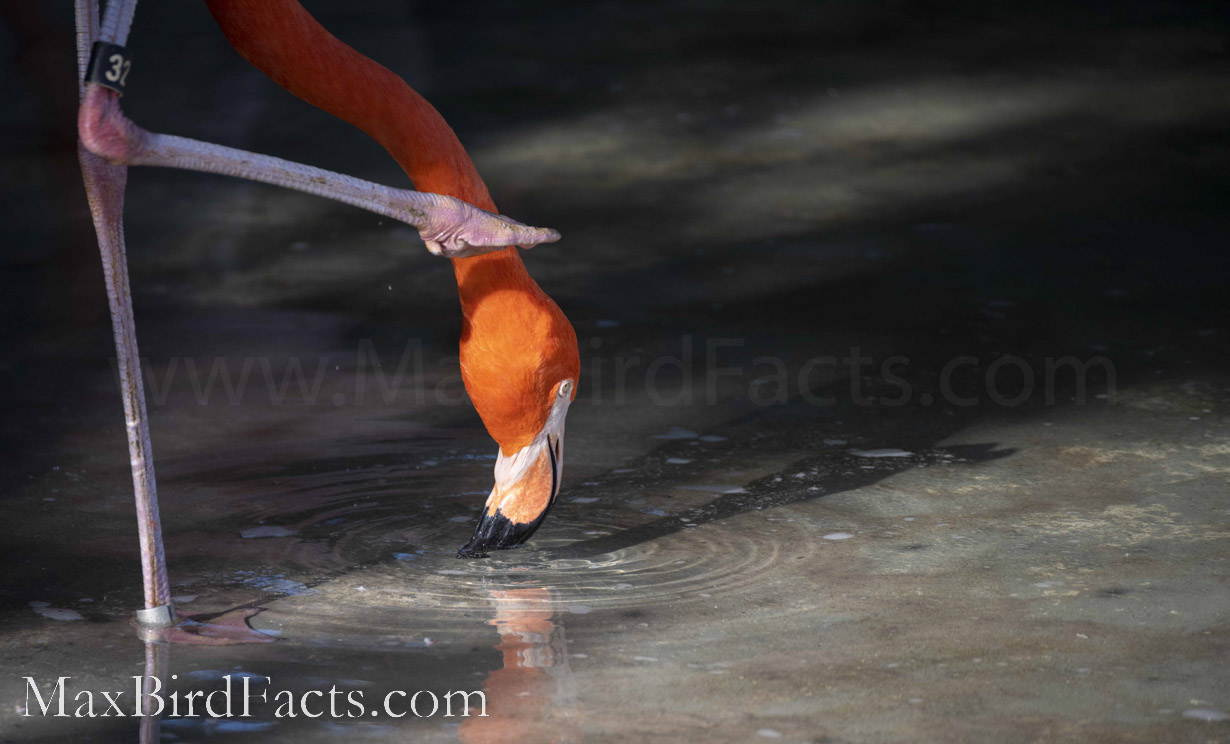
Because some zoos use pigments in the feed of their flamingos, it may have led to the belief that zookeepers can change them to whatever color they want. This is very far from the truth.
The enzymes the liver produces to gain the pink pigments from beta-carotene are specific to that. Even with the species that show orange and yellow, they have enzymes and pathways that only work with those colors.
And even then, colors like blue are caused by structural differences in the feather’s molecular structure, not the use of pigments. I have an article dedicated to how this isn’t possible: Why Are Flamingos Blue When That’s Impossible?
Thank you for reading through this; I hope you learned something new. If you have any topics, species, or ideas for future bird-related articles, please leave a comment!
Make today great!
Max
Resources
Bouchard, Anthony. “The Real Reason Why Flamingos Are Pink: Plants And Animals.” LabRoots, Labroots, 10 Dec. 2019, www.labroots.com/trending/plants-and-animals/16349/why-flamingos-are-pink.
“What Do Flamingos and Salmon Have in Common? Flamingos.” Causes of Color, www.webexhibits.org/causesofcolor/7D.html.
“Why Are Flamingos Pink?” CBBC Newsround, BBC News, 17 Jan. 2019, www.bbc.co.uk/newsround/40964645.
Discover more from Welcome to MaxBirdFacts.com!!!
Subscribe to get the latest posts sent to your email.
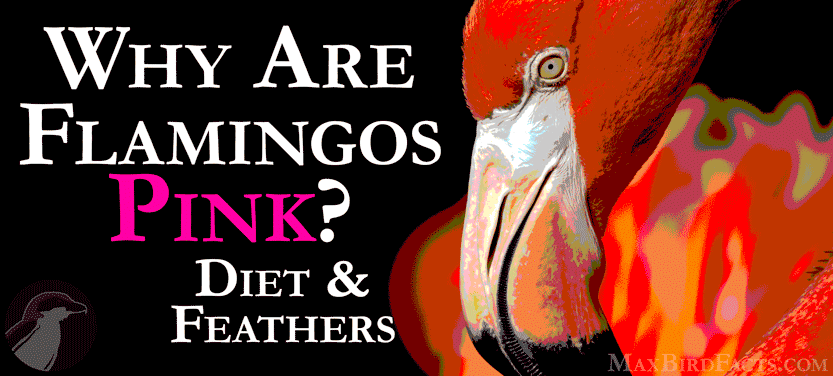
Way cool! Some extremely valid points! I appreciate you penning this article plus, the rest of the website is also really good.
I do not even know how I ended up here, but I thought this post was great. I do not know who you are, but certainly you’re going to be a famous blogger if you aren’t already 😉 Cheers!
Pingback: Why Are Roseate Spoonbills Pink – Shrimp Bowls and Pigmentary Coloration – Welcome to MaxBirdFacts.com!!!
Pingback: Grackle vs Blackbird – 3 Easy to Remember Features to Look Out For When Identifying – Welcome to MaxBirdFacts.com!!!
Thank you so much! I’m so glad you’re enjoying the site so far, do you have anything you would want to learn more about?